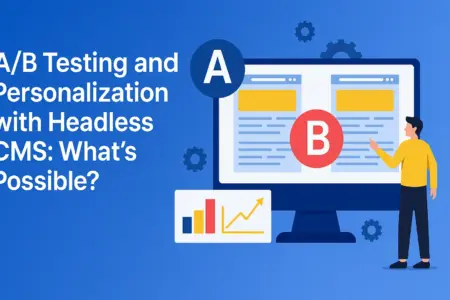After finishing the Parimatch app apk download, a bettor who tops up ₹500 through UPI starts a timer most fans never see: the deposit gateway has roughly 200 milliseconds to approve or block the transfer. The decision engine grabs device fingerprint, payment rail metadata, and past chargeback history; it then pushes the vector through a gradient-boost forest with four layers of fallback heuristics. During IPL 2024, Swiftscore’s switch to this setup stopped ₹28 million in card-testing fraud while letting 97.4% of clean deposits clear on the first pass. Merchants reported an average user wait time of 240 ms, even on 4G, against 1.2 seconds for their older rules-based filter. That speed keeps live-bet shoppers from abandoning the slip when odds shift mid-over.
Data Points That Train the Model
Real-time accuracy comes from feeding the model high-signal attributes gathered at swipe, tap, and sensor level.
| Signal | Example Value | Fraud-Weight Impact* |
| Device hash age | 28 days | —8 bp |
| Accelerometer jitter during CVV entry | 0.18 g | +14 bp |
| SIM country vs. GPS | IN / IN | —10 bp |
| Average top-up velocity past 24 h | 7 deposits | +22 bp |
| Front-camera face match score | 0.94 | —15 bp |
*Impact in basis points on the risk score; higher positive shifts push the gateway toward a manual review.
By weighting motion sensors, face-match confidence, and spend velocity, the model filters scripted bots and recycled devices without forcing extra OTP loops on genuine users. A Mumbai pilot in May 2025 cut false declines to 0.4%, well below the 1.1% average, but many apps still suffer.
Device Fingerprinting vs. Behavior Analytics
Device fingerprinting locks in hardware and network identifiers at millisecond speed, GPU model, IPv6 prefix, clock skew, and a salted hash of installed fonts, then tags each deposit attempt with a familiarity score. That static profile blocks recycled phones, yet fraud rings still pass by flashing fresh IMEIs through custom ROMs. Behavior analytics covers the gap by watching how the user handles the phone.
Micro-shakes in the Z-axis during PIN entry, swipe curvature on the numeric pad, and tap cadence across multiple screens combine into a live pattern that’s far tougher to spoof. When PaySafe integrated both layers during the 2025 Asia Cup, chargeback losses dropped 42% versus fingerprinting alone, while genuine payers completed their top-ups four seconds faster than with an OTP fallback. The two systems mesh: a familiar device with a frantic tap rhythm triggers a soft challenge, whereas an unfamiliar handset that shows natural thumb sweeps glides through untouched.
From UPI to Cards: How Rails Affect Fraud Tactics
Fraud shifts with the payment rail because each pathway exposes different attack surfaces. UPI transactions clear in real time and tie sender identity to a bank-verified VPA, which blunts classic card testing but opens the door to “collect request” phishing during match hype; scammers push a bogus ₹1 micro-request masked as a streaming fee, betting that distracted fans will approve the pull pre-kickoff. Debit and credit cards flip the risk: instant confirmation to the user hides the fact that the merchant still faces a 120-day dispute window.
During the 2024 Champions League final, some flash-bet apps saw card chargebacks spike to 3.7% when long-shot goal-scorer props hit; fraudsters pre-funded accounts, cashed out, then reversed the deposit, citing “unauthorized gaming.” Wallet rails such as Paytm sit between these extremes, offering escrow protection that chokes back disputes but draws SIM-swap attacks aimed at intercepting push-to-pay notifications. Knowing which rail gets used lets the AI gateway weight signals differently—for UPI, velocity on new VPAs ranks high; for cards, historical dispute ratios and BIN country mismatches rise to the top—so the system stays sharp without blanket friction.
Real-World Wins: 45% Chargeback Drop in IPL 2024
During the second half of the 2024 Indian Premier League, PaySphere rolled its AI gateway across five high-volume cricket apps, including a fantasy client that funnels deposits from more than 3 million accounts. Before the switch, chargebacks hovered near 1.8% of processed value, high enough to trigger monthly reserve hikes from acquiring banks. The gateway went live on May 8, right before the Mumbai–Hyderabad match. Over the next 38 days, the blended dispute rate slid to 0.99%, a 45% fall that saved operators roughly ₹27 million in reversed transactions.
What changed? The model blended real-time device scores with velocity checks at settlement, flagging card recyclers who topped up eight times in ten minutes and UPI handles tied to prior dispute clusters. Legit users barely felt the shield: median deposit time stayed flat at 260 ms, and abandonment during payment fell from 4.3% to 3.5% as fewer “review pending” banners appeared. By the playoffs, FriedMind Analytics ranked the rollout as the best fraud-loss improvement among India’s top ten sports apps for 2024, proof that machine scoring can cut risk without slowing the action.



